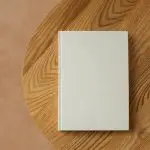Are you tired of dealing with creased velvet fabric? Look no further! In this article, we will share essential tips and techniques to help you keep your bolts of velvet fabric smooth and crease-free.
From understanding the unique characteristics of velvet to proper storage and handling techniques, we’ve got you covered. Say goodbye to those pesky creases and hello to flawless velvet creations.
Let’s dive in and discover the secrets to maintaining perfect velvet fabric!
Table of Contents
Understanding Velvet Fabric and Its Unique Characteristics
Velvet fabric has a luxurious feel and unique characteristics that make it prone to creasing. To keep your bolts of velvet fabric looking their best, proper care and maintenance are essential.
First, it’s important to handle velvet with care to avoid unnecessary creasing. When working with velvet, always use clean hands and avoid dragging or pulling the fabric too forcefully.
Additionally, store your velvet fabric in a cool, dry place to prevent moisture from causing wrinkles. It’s also beneficial to roll the fabric instead of folding it to minimize creases.
Regular steaming can help eliminate any creases that may have formed. When steaming, be sure to hold the steamer a few inches away from the fabric and move it in a gentle, upward motion.
Lastly, if your velvet fabric does develop creases, you can try using a fabric brush or a low-heat iron with a pressing cloth to smooth out the wrinkles.
Preparing Velvet Fabric for Storage and Handling
Before storing or handling velvet fabric, it’s important to properly prepare it to prevent any unwanted wrinkles. Velvet fabric is delicate and requires special care to maintain its luxurious appearance.
To avoid shrinking during washing, always check the fabric care label for specific instructions. Most velvet fabrics should be dry cleaned to prevent damage and maintain their shape. If you need to wash velvet at home, handwashing is recommended.
Fill a basin with cold water and a gentle detergent, and gently agitate the fabric. Rinse thoroughly and lay flat to dry, avoiding direct sunlight or heat sources.
To prevent color fading in velvet fabric, avoid exposing it to direct sunlight for extended periods. Use sheer curtains or blinds to protect velvet from harsh UV rays. Additionally, avoid using harsh chemicals or bleach when cleaning velvet, as they can fade the color.
Regularly vacuum velvet fabric to remove dust and prevent it from settling into the fibers.
Proper Storage Techniques to Prevent Creasing
To prevent unwanted wrinkles, it’s essential to store and handle velvet fabric properly. Choosing the right velvet fabric for your project is the first step in ensuring its longevity. Opt for high-quality velvet with a dense pile, as it is less prone to creasing. Additionally, avoid fabrics with excessive stretch, as they are more likely to develop wrinkles over time.
Once you have your velvet fabric, it’s important to know how to iron and steam it without causing creases. Start by turning the fabric inside out and placing a pressing cloth over it. Set your iron to a low heat or use the steam function, but avoid direct contact with the fabric. Instead, hover the iron over the velvet surface and gently press down, allowing the steam to do the work. Avoid using too much pressure, as this can flatten the pile and create creases.
When steaming velvet, hold the steamer nozzle about six inches away from the fabric and move it in a sweeping motion. This will help to relax the fibers and remove any wrinkles. Be sure to allow the fabric to dry completely before handling or storing it, as damp velvet is more susceptible to creasing.
Best Practices for Transporting Velvet Fabric
When you’re transporting your velvet, make sure to handle it with care to prevent any unwanted wrinkles or creases. Velvet fabric is delicate and prone to creasing, so taking proper precautions during transportation is essential. To ensure the fabric arrives in pristine condition, consider using protective packaging such as garment bags or acid-free tissue paper. These materials will help cushion the fabric and prevent it from rubbing against other surfaces that could cause creases.
In addition to using protective packaging, there are other handling precautions you should take when transporting velvet fabric. Avoid folding the fabric if possible, as this can lead to permanent creases. Instead, roll the fabric loosely to minimize the risk of wrinkles. Secure the rolled fabric with rubber bands or fabric ties to keep it in place.
Furthermore, be mindful of the environment in which you transport the velvet. Extreme temperatures or humidity can negatively affect the fabric and lead to creasing. Keep the fabric away from direct sunlight and avoid placing it near heaters or air conditioning vents.
By following these guidelines and handling precautions, you can ensure that your velvet fabric arrives at its destination without any unwanted wrinkles or creases. Take the time to properly package and handle the fabric, and you’ll be rewarded with a flawless and beautiful material for your projects.
| Protective Packaging | Handling Precautions |
|---|---|
| Garment bags | Avoid folding |
| Acid-free tissue paper | Roll fabric loosely |
| Secure with rubber bands or fabric ties |
Tips for Unrolling and Cutting Velvet Fabric to Minimize Creases
One way to minimize unwanted wrinkles and creases when unrolling and cutting velvet fabric is by gently smoothing it out with your hands. Velvet is a delicate fabric that is prone to creasing, so it’s important to handle it with care during the cutting process.
To begin, find a clean, flat surface to work on. Lay out the velvet fabric, making sure it is smooth and free of any folds or wrinkles. Gently run your hands over the fabric, starting from one end and working your way to the other. This will help to remove any minor creases and ensure a smooth surface for cutting.
When it comes to cutting techniques, it’s best to use sharp scissors or a rotary cutter with a fresh blade. Avoid using a dull blade as it can cause the fabric to snag or tear. Take your time and make slow, steady cuts to prevent any uneven edges or fraying. If you need to cut multiple layers of velvet fabric, consider using weights or pins to hold the layers together, making it easier to cut through them evenly.
It’s important to note that ironing velvet fabric is not recommended, as the heat can damage the delicate fibers and leave shiny marks. Instead, use a fabric steamer or hang the fabric in a steamy bathroom to remove any remaining wrinkles after cutting.
Conclusion
In conclusion, by understanding the unique characteristics of velvet fabric and taking proper precautions, you can effectively prevent creasing.
Remember to prepare the fabric for storage, utilize proper storage techniques, and handle it with care during transportation.
When unrolling and cutting velvet fabric, be mindful of minimizing creases by using gentle movements.
By following these best practices, you can ensure that your bolts of velvet fabric stay smooth and crease-free, preserving their luxurious appearance.
- Is Chanderi Fabric Natural? a Look at Its Eco-Friendly Properties - June 25, 2025
- The Process of Weaving a Chanderi Saree: From Thread to Heirloom - June 25, 2025
- How Is Chanderi Silk Made? the Intricate Art of the Weaver - June 25, 2025




